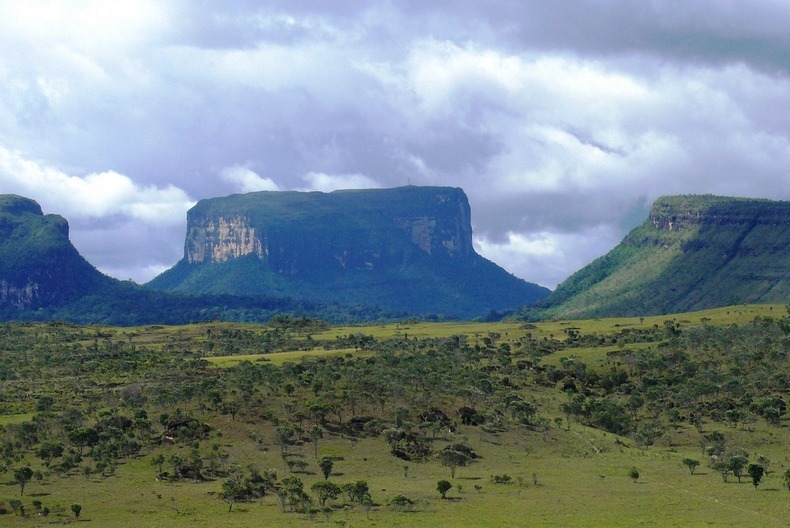Tepuis are flat table-top mountains found in the Guayana Highlands of South America, especially in Venezuela. In the language of the Pemon people who live in the Gran Sabana, Tepui means ‘House of the Gods’ due to their height.
Tepuis tend to be found as isolated entities rather than in connected ranges, which makes them host to hundreds of endemic plant and animal species, some of which are found only on one tepui. Towering over the surrounding forest, the tepuis have almost sheer vertical flanks, and many rise as much as 1,000 meters above the surrounding jungle. The tallest of them are over 3,000 meters tall. The nearly vertical escarpments and dense rainforest bed on which these tepuis or mesa lie make them inaccessible by foot. Only three of the Gran Sabana's mountains can be reached by foot, among which the 2,180m-high Roraima is the most accessible.
Tepuis are the remains of a large sandstone plateau that once covered the granite basement complex between the north border of the Amazon Basin and the Orinoco, between the Atlantic coast and the Rio Negro, during the Precambrian period. Over millions of years, the plateaus were eroded and all that were left were isolated flat-headed tepuis. Although the tepuis looks quite barren, the summit is teeming with life.
The high altitude of tepuis causes them to have a different climate from the ground forest. The top is often cooler with frequent rainfall, while the bases of the mountains have a tropical, warm and humid climate. Many extraordinary plants have adapted to the environment to form species unique to the tepui.
Some 9,400 species of higher plants have been recorded from the Venezuelan Guayana, of which 2322 are registered from the tepuis. Approximately one-third of the species occur nowhere else in the world.
There are 115 such tabletop mountains in the Gran Sabana region in the south-east of Venezuela where the highest concentration of tepuis are found. The most famous among them is Mount Roraima. Roraima, was unexplored until 1884. Today, the plateaued summit is a popular destination for backpackers and home to small waterfalls, natural quartz-lined pools and Punto Triple, the point at which the borders of Venezuela, Brazil and Guyana meet. Mount Roraima is said to have inspired the Scottish author Arthur Conan Doyle to write his novel The Lost World.
The other famous tepui is Auyantepui, home to Angel Falls, the highest waterfall in the world. Auyantepui is also the largest of the tepuis with a surface area of 700 km².

































They look like a flying mountains of Pandora
ReplyDeleteThey really do
DeleteI believe they were pictured in the movie UP
ReplyDeleteyes, they did
DeleteYes, they did!
DeleteIt's look like Up movie.
ReplyDeleteThey said that it was inspired by these mountains for the movie
Deleteparadise falls
ReplyDeleteThis is where you find Kevin
ReplyDeleteThe movie UP was actually inspired by the venezuelan amazon
ReplyDeleteMy beautiful country! !
ReplyDeleteBeautiful Venezuela! God bless you!
ReplyDeleteare there any animals on the top of these tepuis???
ReplyDeleteThats also what i want to know
DeleteBeatiful they are
ReplyDeleteHow are they formed?
ReplyDelete"Punto triple" no way... better "punto doble" The Mount Roraima is only of Venezuela and Brazil, the Esequibo belongs to Venezuela
ReplyDelete"Here snipe,here snipie snipe."
ReplyDelete